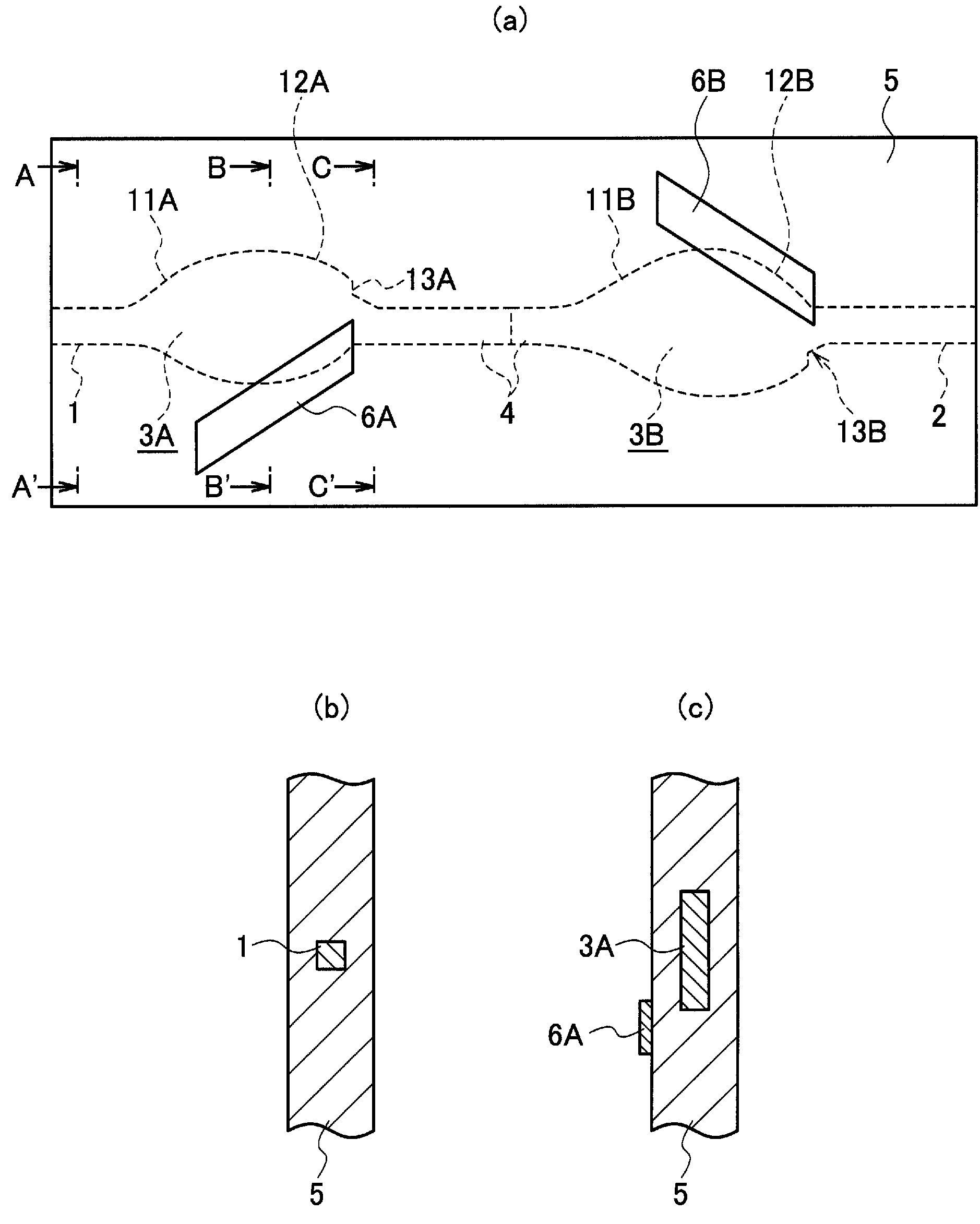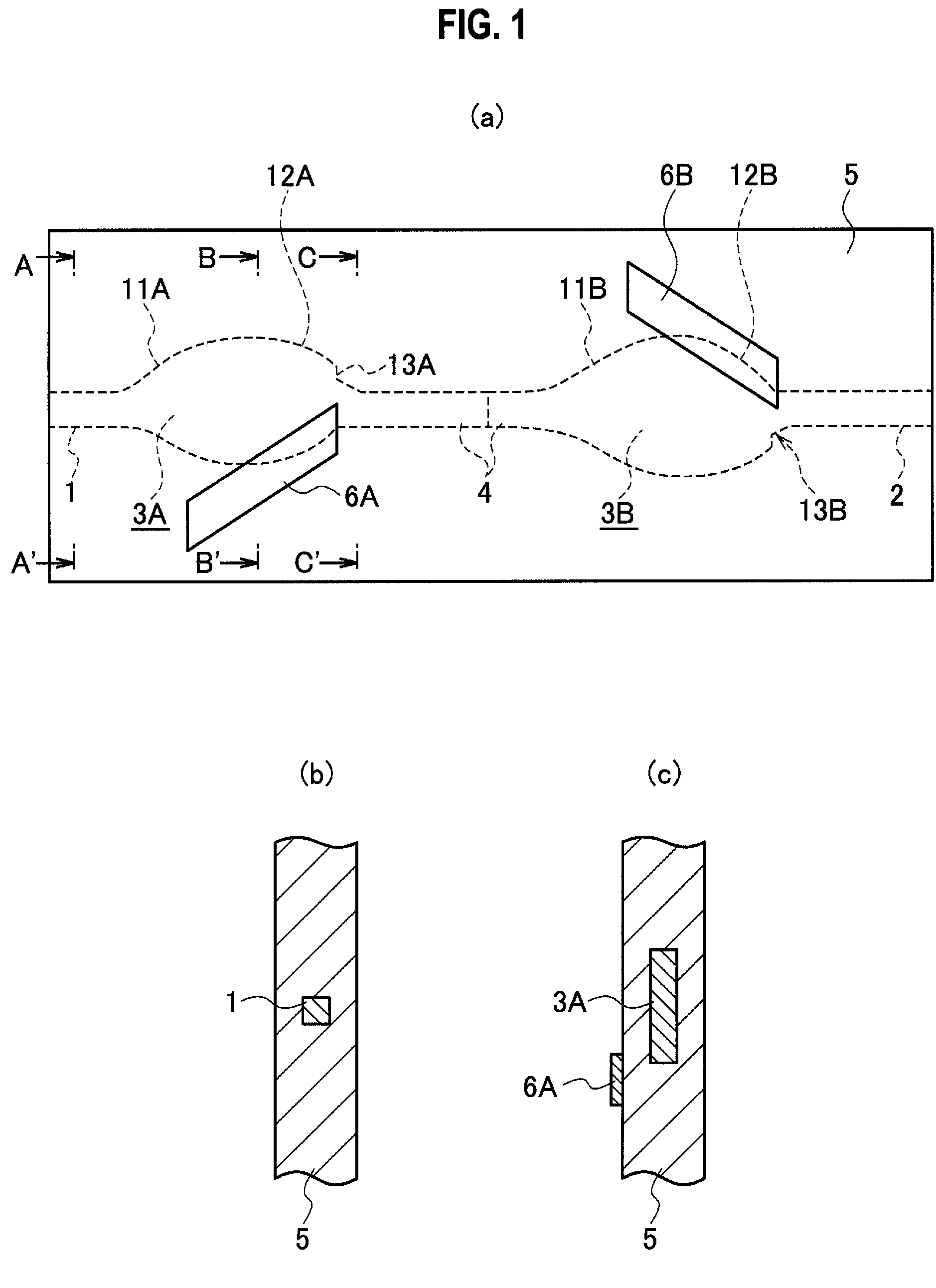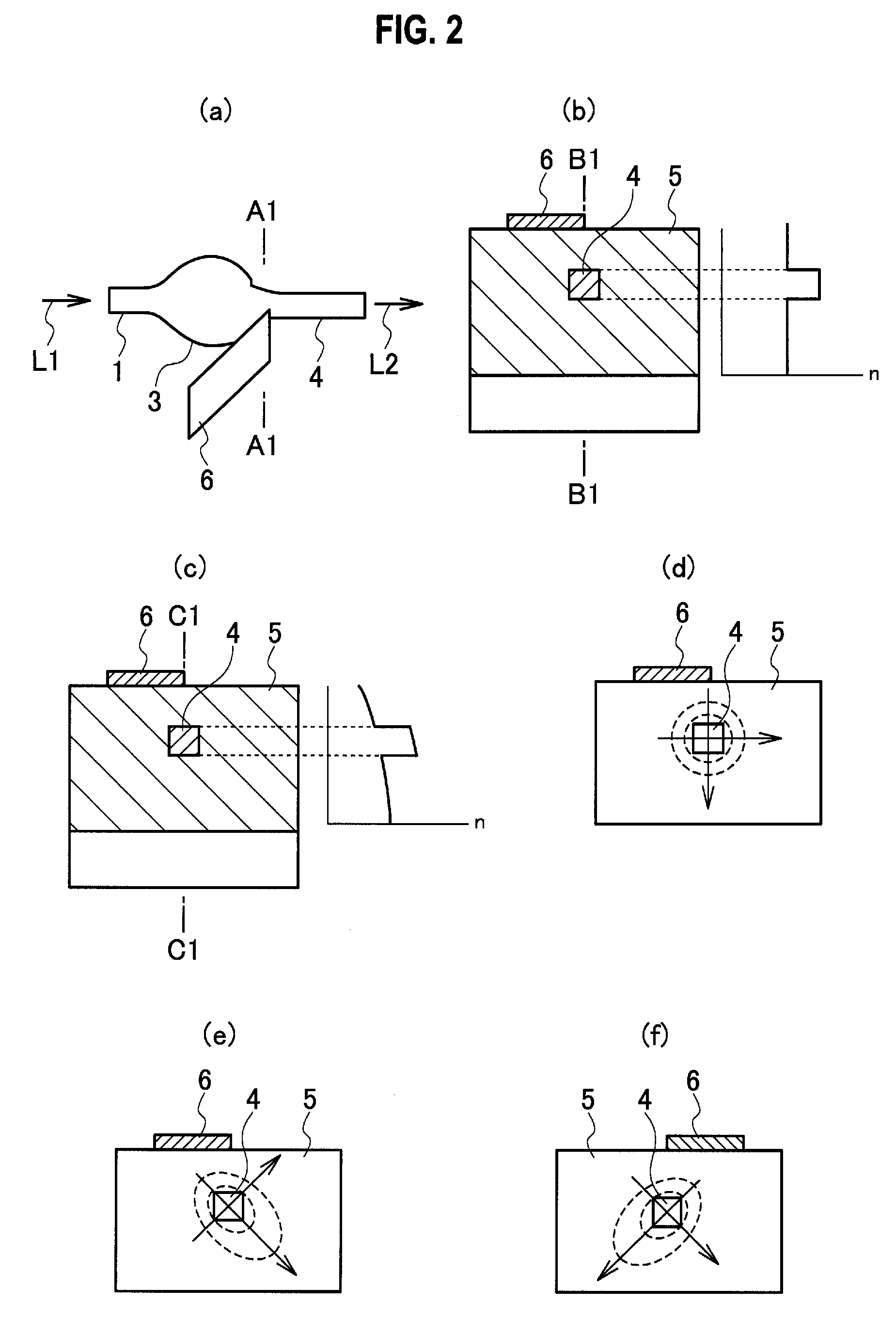Optical attenuator
a technology of optical attenuators and attenuators, which is applied in the direction of optical light guides, optical waveguide light guides, instruments, etc., can solve problems such as optical interference, and achieve the effects of suppressing optical signal deterioration, and reducing polarization dependent loss
- Summary
- Abstract
- Description
- Claims
- Application Information
AI Technical Summary
Benefits of technology
Problems solved by technology
Method used
Image
Examples
Embodiment Construction
[0064]Referring to accompanying drawings, embodiments of the present invention will be described below.
[0065]The present invention is applied on an optical attenuator, for example, whose plan view is shown in FIG. 1(a) and a sectional view of the optical attenuator is shown in FIG. 1(b). This optical attenuator is used to attenuate optical power with respect to each wavelength for regulation in WDM (Wavelength Division Multiplexing) communication in an optical communication field. When a light having a certain wavelength is inputted, the optical attenuator controls attenuation of the light and subsequently outputs it from an output optical waveguide 2. Note that the optical attenuator of FIG. 1 is nothing but a type of optical attenuator that outputs light upon regulating its optical attenuation, providing one channel of optical power.
[0066]This optical attenuator comprises a first optical waveguide 3A on a front stage connected to an input optical waveguide 1, a second optical wave...
PUM
| Property | Measurement | Unit |
|---|---|---|
| refractive index | aaaaa | aaaaa |
| refractive index | aaaaa | aaaaa |
| refractive index | aaaaa | aaaaa |
Abstract
Description
Claims
Application Information
 Login to View More
Login to View More - R&D
- Intellectual Property
- Life Sciences
- Materials
- Tech Scout
- Unparalleled Data Quality
- Higher Quality Content
- 60% Fewer Hallucinations
Browse by: Latest US Patents, China's latest patents, Technical Efficacy Thesaurus, Application Domain, Technology Topic, Popular Technical Reports.
© 2025 PatSnap. All rights reserved.Legal|Privacy policy|Modern Slavery Act Transparency Statement|Sitemap|About US| Contact US: help@patsnap.com



